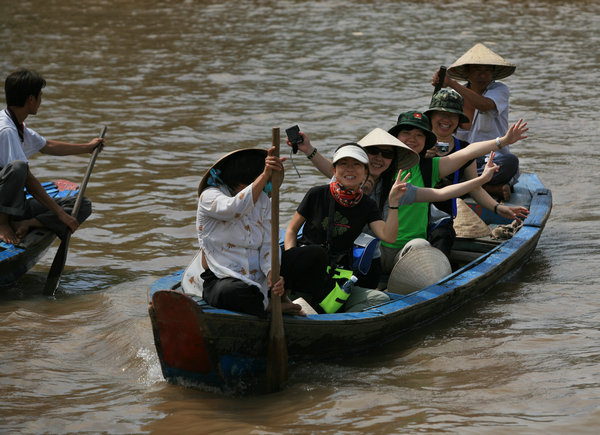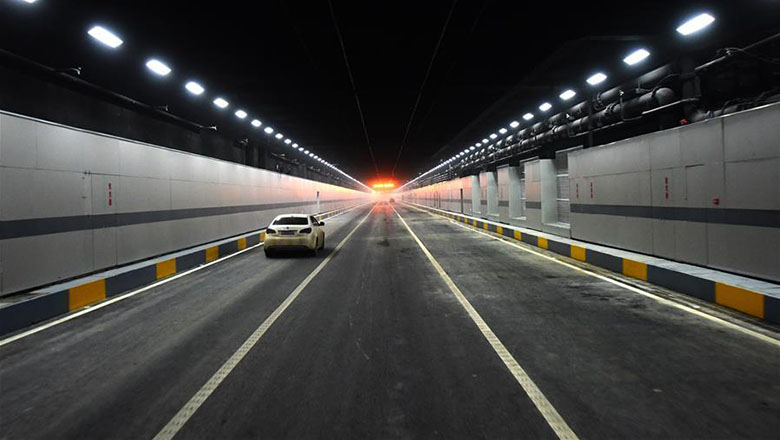Around the world, in a year
Updated: 2015-12-30 09:08
By Yang Feiyue and Li Jing(China Daily)
|
||||||||
 |
|
A group of Chinese women on a boat trip on the Mekong River in Vietnam.[Photo by Li Fantu/ China Daily] |
The rise of the yuan against many currencies, despite an adjustment this year, has also enabled Chinese to save money when traveling.
It's still much stronger against the US dollar and the euro than in the past, World Tourism Cities Federation deputy secretary-general Li Baochun points out.
Also, many countries have offered tax rebates, he says.
The yuan depreciation's impact is less likely to be felt in such popular destinations as Japan, South Korea, Australia and eurozone countries, whose own currencies have fallen sharply, the Sydney-based Center for Asia-Pacific Aviation says.
Cheaper luxury items and consumer goods are also luring Chinese abroad.
Such high-end products as watches, suitcases, clothes, wine and electronic devices cost 72 percent more on the Chinese mainland than in France and 51 percent more than in the United States, Ministry of Commerce data show.
About 88 percent of the $164.8 billion Chinese spent overseas last year-a fourfold increase over 2008-was on shopping, reports the China Tourism Academy, a research institution affiliated with the China National Tourism Administration.
Chinese spent $16 billion yuan abroad this October, when spending spiked because of the weeklong National Day holiday.
A primary destination was Japan, due to proximity, the yen's fall and consumption-tax eliminations on many goods.
About 400,000 Chinese spent about $833.7 million in the neighboring nation during the National Day Golden Week.
They spent about $8.9 billion in Japan during the first nine months, up 165 percent year-on-year, Japanese media report.
Chinese visitors to Japan doubled in 2015's first 10 months to 4.3 million, Japan Travel Agency reports. It expects the number to break 5 million by year-end.
South Korea remained a top destination, despite a dip surrounding the Middle East Respiratory Syndrome outbreak, thanks to visa relaxations for Chinese and tourism promotions.
About 210,000 Chinese arrived in South Korea over the National Day holiday, up 30 percent over the same period last year, the country's tourism authority reports.
The 2015 total is expected to reach 6.5 million, South Korea's tourism authority predicts.
About 4 million Chinese arrived in Thailand in the first six months of the year, a 110 percent increase over the same period in 2014, the country's tourism authority's data show.
Spending surged 140 percent to $53.5 million.
But the biggest spending surprise came from Australia, where Chinese spent $7.7 billion last year. The tourism authority had forecast Chinese spending would reach $7.4 billion by 2020.
Chinese visits increased about 20 percent and are expected to reach 1 million annually soon, Tourism Research Australia says.
Russia's weaker rouble helped coax over 200,000 Chinese in 2015's first six months.
They spent $1 billion in Russia last year, when 410,000 visited.

 Yearender: Chinese athletes of year
Yearender: Chinese athletes of year
 Yearender: Key words from popular China news stories in 2015
Yearender: Key words from popular China news stories in 2015
 Hangzhou shuts steel plant to improve air quality
Hangzhou shuts steel plant to improve air quality
 China's longest tunnel under lake open to traffic
China's longest tunnel under lake open to traffic
 Top 10 policy changes in China in 2015
Top 10 policy changes in China in 2015
 Yearender 2015: Natural disasters
Yearender 2015: Natural disasters
 The world in photos: Dec 21 - 27
The world in photos: Dec 21 - 27
 Yearender: Film critics' top 10 Chinese films of 2015
Yearender: Film critics' top 10 Chinese films of 2015
Most Viewed
Editor's Picks

|

|

|

|

|

|
Today's Top News
Shooting rampage at US social services agency leaves 14 dead
Chinese bargain hunters are changing the retail game
Chinese president arrives in Turkey for G20 summit
Islamic State claims responsibility for Paris attacks
Obama, Netanyahu at White House seek to mend US-Israel ties
China, not Canada, is top US trade partner
Tu first Chinese to win Nobel Prize in Medicine
Huntsman says Sino-US relationship needs common goals
US Weekly

|

|








